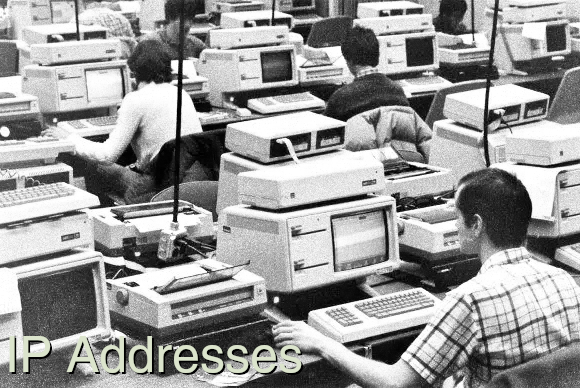If you’ve been on the internet for a while, eventually, you’re going to see a weird string of numbers called an IP address. They’re a cluster of four numbers between 0 and 255, separated by periods. Like 8.8.8.8 or 192.185.71.128 (that’s the IP for this blog!) or 172.66.40.4.
But why are they shown like that?
The truth is twofold: for ease of viewing and for organization. Computers see them as long strings of binary without any breaks, and it’d be tedious and easy to make mistakes if we had to type things like 00001000000010000000100000001000 (that’s 8.8.8.8) all the time. In truth, though, you could write them as a single number, which in the case of 8.8.8.8 would be 34952. That’s not too hard to remember! Our IP would be number 3233367936, which is a little trickier but still only 10 digits.
So, that’s where the organization part comes in. When the internet was first created, they wanted to give computers addresses and not worry about running out, so they decided to create them using 4 bytes of data (in the early 1980s when 4 bytes was a LOT of data to send over a network). This created 4,294,967,295 IP addresses, which seemed like way more than we’d ever need (we actually ran out in 2011, but that’s a story for another day). Then they wanted to give large blocks of IPs to various research groups and universities, but needed a way to tell the computers what IPs were in which networks. Thus, they came up with the idea to represent each byte individually so that they could write rules. Apple, for instance, got the 17-block, meaning 17.x.x.x was in Apple’s network. MIT got 18, Xerox had 13, GE had 3, and the Army had 6. This meant that computer rules could be created to easily look at JUST the first byte of data and know where to send traffic, saving on processing (again, early 1980s tech). Like how your area code tells (or told, I imagine it’s way more complex with cell phones) a long-distance operator where to route a call, or the @gmail.com tells your email what server to send email to.
The more you know.

